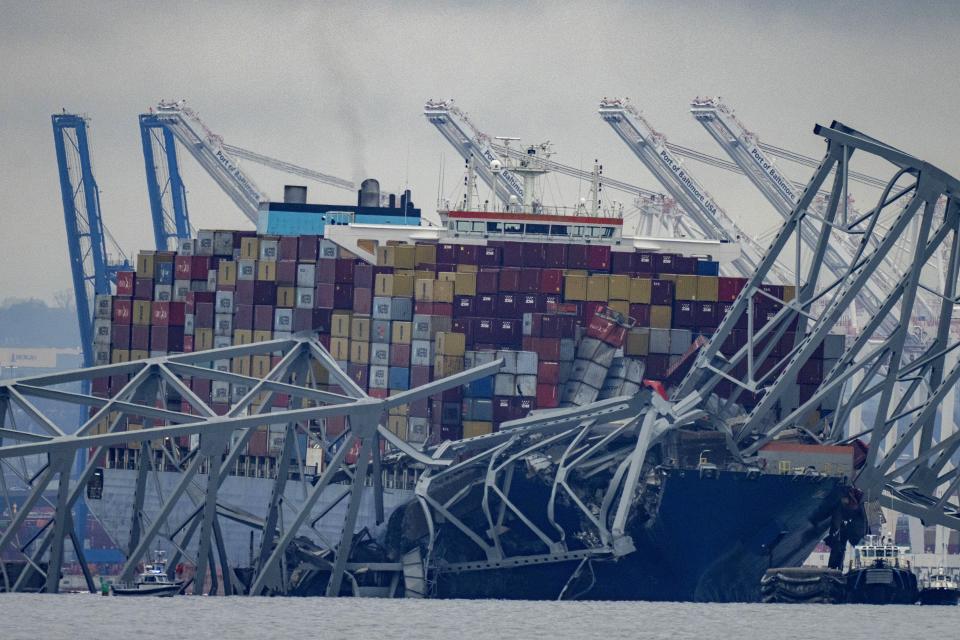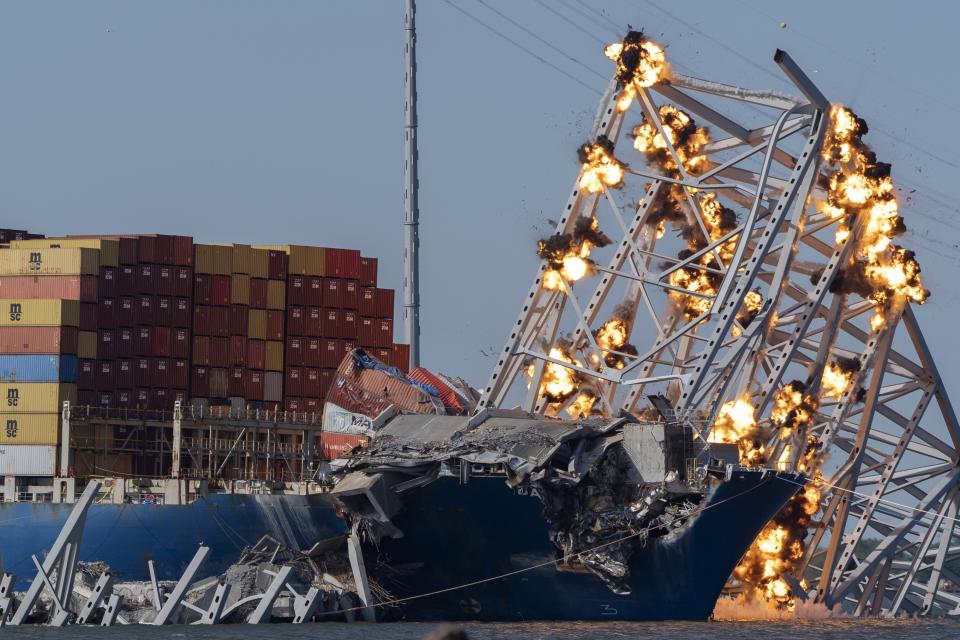Ship that struck Baltimore bridge had 4 blackouts before disaster. Here's what we know
The Dali container ship experienced a near-perfect storm of calamities before it struck Baltimore's Francis Scott Key Bridge in March, killing six people. But Tuesday's preliminary report by federal safety investigators leaves many questions unanswered.
For example, the National Transportation Safety Board described four power failures that beset the 984-foot (300-meter) ship. Reasons for three of them are yet to be explained, including two that occurred right before the crash.
Here's what we know and don't know about the problems on the ship before the disaster:
HOW MANY TIMES DID THE SHIP LOSE POWER?
The Dali suffered four blackouts in roughly 10 hours: two the day before the crash and two in the minutes before.
The first came after a crew member mistakenly closed an exhaust damper during maintenance, causing one of the ship’s diesel engines to stall, according to the safety report. A backup generator came on, but insufficient fuel pressure soon caused that generator to kick off, resulting in a second blackout. It's unclear why the fuel pressure dropped.
In response, crew members changed the ship’s electrical configuration, which is considered routine. They switched from one transformer and breaker system that had been in use for several months to another configuration.
The third outage struck hours later, after the ship had left the Port of Baltimore and was navigating the Patapsco River. Electrical breakers unexpectedly tripped, causing a power loss. The Dali’s diesel engine automatically shut down because its cooling pumps lost power.
The pilot's dispatcher called police and notified the Coast Guard of the power loss. Crew members momentarily restored electricity by manually closing the breakers. Then more breakers tripped, causing another outage as the ship approached the bridge. The crew restored power, but it was too late.
One of the pilots ordered the rudder turned, but since the main engine remained down, there was no propulsion to assist with steering, the report said. The ship struck one of the bridge's main supports, causing the span to collapse.
WHAT MAY HAVE CAUSED THE BLACKOUTS?
The reason behind one power outage is known — the crew member’s failure to close the exhaust damper. The reason for the second blackout remains unclear, and the two instances of the tripped breakers appear to be complete mysteries.
Jennifer Homendy, chair of the National Transportation Safety Board, told a congressional committee Wednesday that the first two blackouts were “mechanically distinct" from the second two outages.
She said switching out the breakers following the first two outages “may have affected operations the very next day on the accident voyage.”
Stefano Brizzolara, a professor of ocean engineering at Virginia Tech, pointed out that the crew switched to a configuration that hadn't been used for several months, describing it as like putting on a pair of shoes that you haven't worn in a long time that have become “hard and stiff.”
“Every time you switch to electrical components that are not normally used, the risk of failure increases a little bit,” he said.
But changing up a ship’s power configuration is fairly routine, even if it’s been several months, said Neil J. Gallagher, a professor at the Webb Institute, a school that teaches naval architecture and marine engineering.
“It shouldn’t change anything,” Gallagher said. “Transformers are a pretty benign item. It’s just coils of wire. It doesn’t have moving parts. It doesn’t have a whole lot that breaks on it. So, it’s not normally the source of issues like this.”
WHAT ELSE COULD HAVE BEEN DONE?
Gallagher added that the mistake with the damper would have caused some concern but not enough to raise major worries before leaving port.
“They went for 10 hours and had no problems,” he said. “And in all fairness, the breakers that shut down when they were underway were not the same as what happened when the engine lost power because they closed the damper.”
Gallagher said cargo ships do not routinely lose power.
“This is kind of a perfect storm of events that happened at just the absolute worst possible time,” he said.
Brizzolara said the crew seemed to have reacted to power failures in a prompt manner.
“I don’t know if they could do more,” he said. “These things can happen, unfortunately. Machines are prone to fault. And yes, there are redundancies onboard of ships. But even redundant systems can fail. And this is an example.”
Bradley Martin, a former U.S. Navy captain and a senior policy researcher at the RAND Corporation, said the limited space in many ports increases the risks of these type of disasters.
“Anybody who’s ever been around ships knows that machinery fails at inopportune times,” Martin said. “And being so close to infrastructure like this means there’s no good way of reacting quickly enough."
Thomas McKenney, a University of Michigan professor of naval architecture and marine engineering, said the tragedy in Baltimore raises questions about whether most cargo ships have enough safeguards.
“I think the relevant question here is how reliable and redundant should systems be onboard ships, especially understanding that ships have gotten larger and larger over time,” McKenney said, adding, "Shipping remains by far the most efficient way to transport goods. So it’s really having the right balance between cost efficiency without compromising safety.”
___
Associated Press reporter Kristin M. Hall in Nashville, Tennessee, contributed to this article.


